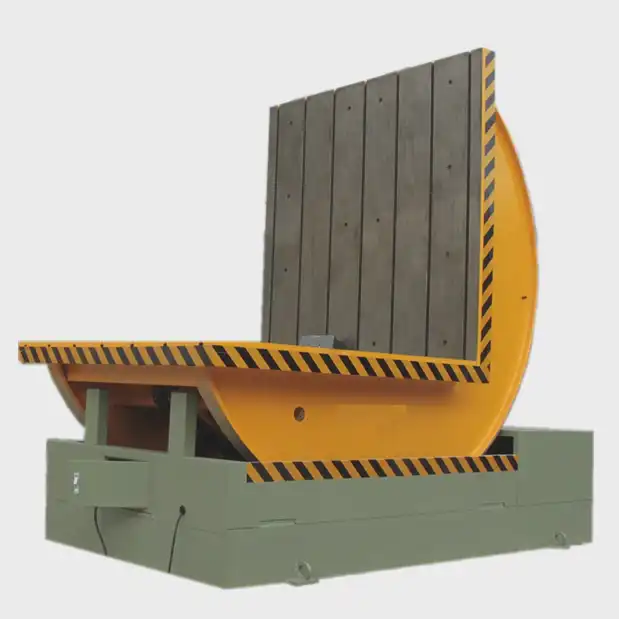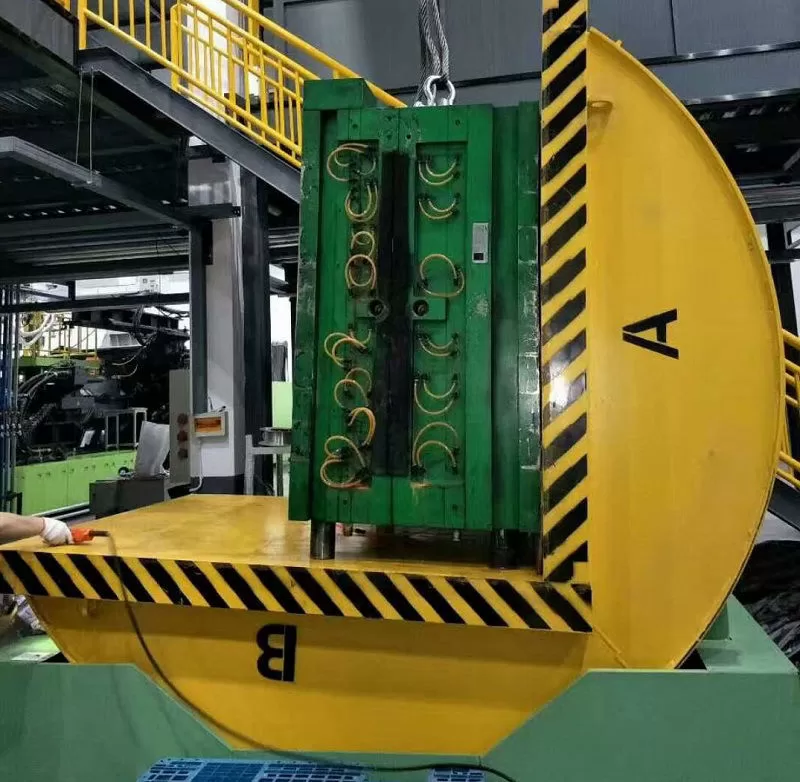Optimizing Safety and Efficiency with Mold Upenders and Tilters
In industries relying on heavy molds and dies, such as plastics manufacturing, die casting, and metal stamping, efficient and safe handling is paramount. Mold upenders and tilters are essential pieces of material handling equipment designed specifically to manipulate these heavy, cumbersome items, significantly enhancing operational workflow and worker safety.
What is a Mold Upender and Tilter?
A mold upender and tilter is specialized industrial machinery engineered to securely grip and rotate heavy objects, primarily molds and dies, typically through 90 or 180 degrees. This controlled rotation allows operators to safely access different sides of the mold for various critical tasks.
The core function involves repositioning molds from horizontal to vertical orientation (or vice versa). This capability is crucial for:
- Mold Maintenance and Repair: Easily accessing internal components or surfaces requiring service.
- Mold Cleaning: Thoroughly cleaning mold cavities and surfaces between production runs.
- Part Removal: Assisting in the extraction of complex parts from the mold.
- Mold Storage and Transportation: Positioning molds correctly for storage racks or transport.
- Setup and Changeover: Facilitating quicker and safer mold changes in presses or machinery.

mold upender How Mold Handling Equipment Works
Most mold upenders and tilters operate using robust hydraulic or electro-mechanical systems, ensuring smooth and precise movement even with substantial loads. Key components typically include:
- Sturdy Frame: Built from heavy-gauge steel to withstand significant weight and operational stress.
- Loading Platform/Cradle: The surface where the mold is securely placed. Designs vary based on load requirements and mold shapes.
- Drive Mechanism: Usually hydraulic cylinders or powerful electric motors coupled with gearboxes provide the rotational force.
- Control System: Ranging from simple push-button controls for manual operation to sophisticated Programmable Logic Controllers (PLCs) for automated sequences and integration with other factory systems.
The process involves placing the mold onto the platform, securing it if necessary, and activating the tilting or upending mechanism via the control interface. The machine then rotates the load to the predetermined angle (commonly 90 degrees).
Key Benefits in Manufacturing Operations
Integrating mold upenders and tilters into a production environment offers significant advantages:
- Enhanced Worker Safety: Dramatically reduces the risks associated with manually handling or using overhead cranes for rotating heavy, unbalanced loads. This aligns with safety best practices outlined by organizations like OSHA regarding material handling.
- Increased Operational Efficiency: Speeds up tasks like mold maintenance, cleaning, and changeovers, minimizing downtime and boosting productivity.
- Protection of Assets: Prevents damage to expensive molds and dies that can occur during manual handling or less controlled lifting methods.
- Improved Ergonomics: Reduces physical strain on workers, leading to fewer musculoskeletal injuries.
- Versatility: While designed for molds, similar technology is often adapted for handling other heavy industrial items like steel coils, paper rolls, or large components.
Essential Features and Considerations
When selecting or evaluating mold handling equipment, consider these factors:
- Load Capacity: Must safely exceed the weight of the heaviest molds or dies it will handle.
- Platform Size and Design: Needs to accommodate the dimensions and shape of the molds. Custom platform designs are often available.
- Tilting Angle: Typically 90 degrees, but specific applications might require different rotation ranges.
- Power Source: Hydraulic, pneumatic, or electric, depending on facility infrastructure and operational preferences. Hydraulic systems are common for very heavy loads due to their power density.
- Control Sophistication: Manual, semi-automatic, or fully automatic PLC control.
- Safety Features: Essential elements include emergency stops, overload protection, physical guarding or light curtains, and interlocking mechanisms to prevent operation under unsafe conditions.
- Construction Quality: Heavy-duty steel construction ensures durability and longevity in demanding industrial environments.
- Maintenance Access: Designed for easy access to key components for routine maintenance.

mold upender12 Applications Across Industries
Mold upenders and tilters are indispensable in:
- Plastic Injection Molding: Handling large, complex injection molds for maintenance and changeovers.
- Die Casting: Manipulating heavy casting dies.
- Metal Stamping: Positioning large stamping dies for maintenance or press setup.
- Tool and Die Shops: General handling and maintenance of various customer molds and dies.
- Rubber Molding: Handling molds used in rubber product manufacturing.
While the primary focus is often molds and dies, the underlying technology is adaptable. The images below showcase variations of upending and tilting equipment used in handling steel coils, demonstrating the versatility of this heavy-load manipulation principle.
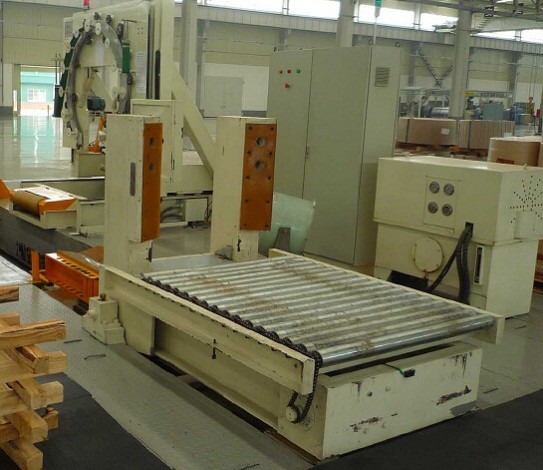
Upender/tilter integrated with a coil wrapping machine in a packing line.
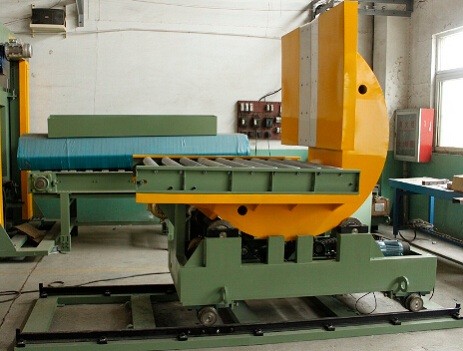
Upender/tilter system featuring a track for material movement.
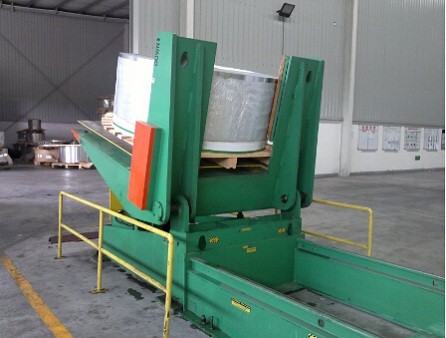
Heavy-duty hydraulic upender/tilter engineered for steel coil handling.
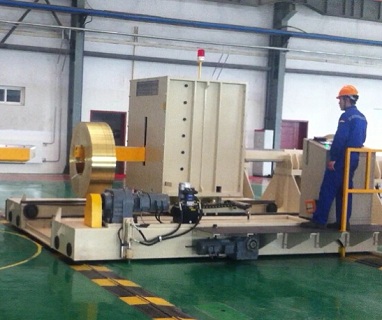
Steel coil transfer car, often used in conjunction with tilting equipment.
Conclusion
Mold upenders and tilters are critical investments for manufacturers working with heavy molds and dies. By enabling safe, controlled rotation, they significantly improve safety, boost operational efficiency, and help protect valuable tooling assets. Choosing the right equipment involves careful consideration of load requirements, operational needs, and safety features, ensuring a solution that seamlessly integrates into the production workflow and contributes to a safer, more productive manufacturing environment.
For further information on related heavy load handling solutions, you can explore resources on Coil Upenders and Tilters.
